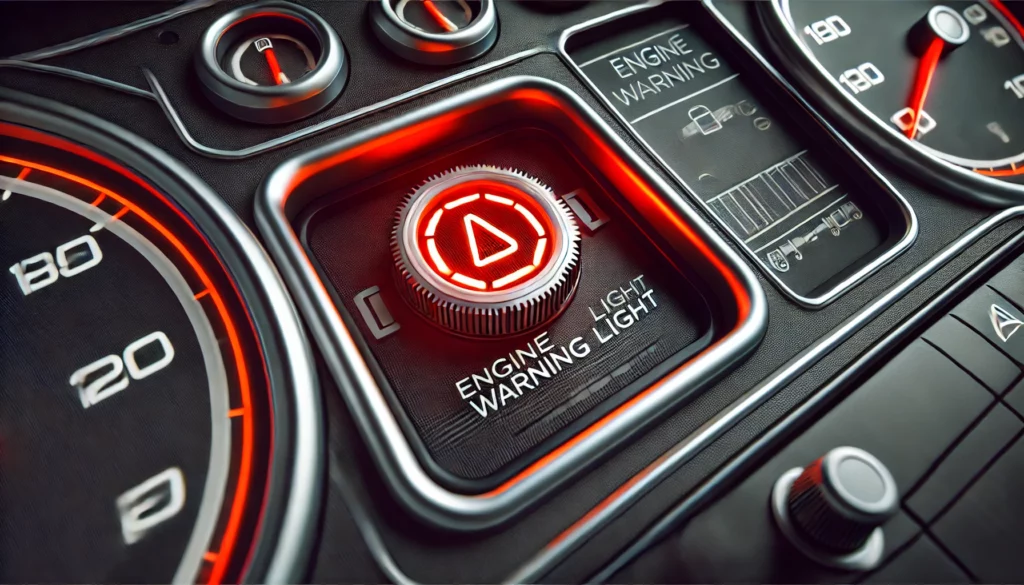Modern vehicles are equipped with a variety of dashboard warning lights designed to alert drivers to potential issues. Understanding these indicators is crucial for maintaining your vehicle’s health and ensuring safety on the road. This guide will help you identify and troubleshoot some of the most common dashboard warning lights.
Understanding Dashboard Warning Lights
Dashboard warning lights use a colour-coded system to convey the severity of an issue:
- Red Lights: Indicate a serious problem requiring immediate attention. It’s advisable to stop the vehicle safely and address the issue promptly.
- Amber or Yellow Lights: Signal a non-critical issue that should be checked soon to prevent further complications.
- Green or Blue Lights: Inform the driver that a system is active and functioning properly; no immediate action is needed.
Common Dashboard Warning Lights and Troubleshooting Tips
- Check Engine Light (Malfunction Indicator Lamp):
- Meaning: This light can indicate a range of issues, from minor problems like a loose fuel cap to more severe concerns involving the engine or emissions system.
- Action: If the check engine light comes on, first check for a loose fuel cap and tighten it if necessary. If the light persists, it’s advisable to have your vehicle scanned for diagnostic trouble codes at an auto repair shop. Ignoring this light can lead to costly repairs if a serious issue is developing.
- Brake System Warning Light:
- Meaning: This symbol can indicate that the brake fluid level is low, and often appears after you have fully released the handbrake.
- Action: When it comes to changing or checking the brake fluid levels yourself, only do so if you know how. If you don’t, call a professional to check them for you.
- Oil Pressure Warning Light:
- Meaning: The oil warning light appears on your dashboard when the oil level in the engine is either too low, or that the oil temperature is too high.
- Action: When this appears, you should stop the vehicle as soon as it’s safe to do so and turn off the engine – using the engine while it isn’t being properly lubricated can cause expensive (and possibly terminal) damage.
- Battery Charge Warning Light:
- Meaning: The battery warning light signals that there may be an issue with the battery or the vehicle’s charging system. This could indicate a failing battery, a faulty alternator, or loose connections.
- Action: If this symbol appears, it’s important you get to a garage as soon as you can – while your vehicle will run normally until the battery is flat, nothing in your vehicle will work once it’s been drained.
- Coolant Temperature Warning Light:
- Meaning: This icon appears on your dashboard when the coolant levels in your vehicle’s engine are running low and need to be topped up.
- Action: When this icon appears in red, this indicates the engine is overheating and means you should stop as soon as it is safe to do so.
- Anti-lock Braking System (ABS) Warning Light:
- Meaning: Indicates a problem with the ABS, which prevents the wheels from locking during braking.
- Action: Take extra care when driving, especially during wet or icy weather, as your car’s braking distances may increase. Get a garage to check the ABS system as soon as possible.
- Airbag Warning Light:
- Meaning: If this symbol appears on your dashboard, this means at least one element of the airbag system isn’t working correctly.
- Action: If the safety system is not working properly, it may not go off in a crash or even it might deploy unexpectedly and cause a crash. Either way, the airbag system is an incredibly important safety feature and you should get it checked out immediately.
- Tyre Pressure Warning Light:
- Meaning: This light indicates that one or more tyres are significantly under-inflated, which can affect vehicle handling and safety.
- Action: Check the tyre pressures and inflate them to the recommended levels. If the light remains on, there may be a puncture or other issue requiring professional attention.
- Traction Control Warning Light:
- Meaning: This light indicates an issue with the vehicle’s traction control system, which helps prevent wheel spin during acceleration.
- Action: While the vehicle can still be driven, it’s advisable to have the system checked to ensure optimal safety, especially in adverse driving conditions.
Preventative Measures
- Regular Maintenance: Adhering to your vehicle’s maintenance schedule can prevent many issues that trigger warning lights. Regular servicing ensures that potential problems are identified and addressed early.
- Stay Informed: Familiarise yourself with your vehicle’s owner’s manual, which provides detailed information about each warning light and the appropriate actions to take.
- Use Technology: Consider using apps or devices that monitor vehicle health and alert you to issues before they become serious problems.
Conclusion
Understanding and responding promptly to dashboard warning lights is essential for safe and efficient vehicle operation. By taking appropriate actions when these lights illuminate, you can prevent minor issues from escalating into major repairs, ensuring peace of mind on the road.

